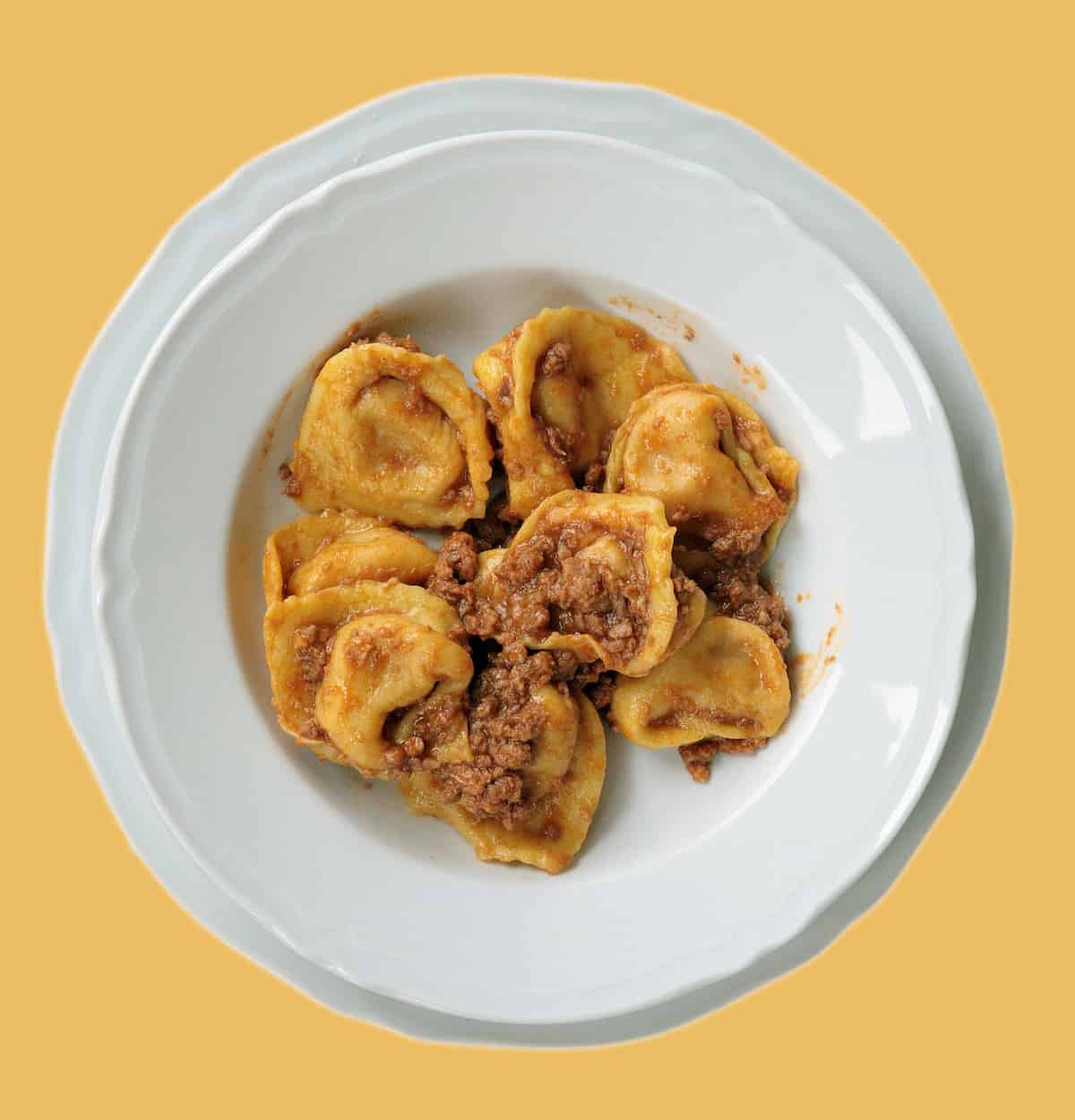Cappellacci

Il cappellaccio di zucca viene menzionato per la prima volta nel 1584 nel libro “Dello Scalco” di Giovan Battista Rossetti, cuoco alla corte del duca Alfonso II d’Este a Ferrara.
Il termine dialettale “caplaz” deriva dalla forma del prodotto, simile al cappello di paglia dei contadini. La tipologia di zucca utilizzata per il ripieno è la zucca Violina, una varietà coltivata nella provincia di Ferrara, nota per la sua consistenza soda e il sapore dolce. Oggi, il cappellaccio di zucca è un prodotto IGP e un simbolo della cucina tradizionale ferrarese.
L’abbinamento con il ragù di carne è il più tradizionale e conferisce un ottimo contrasto tra la dolcezza della zucca e il sapido del sugo.

